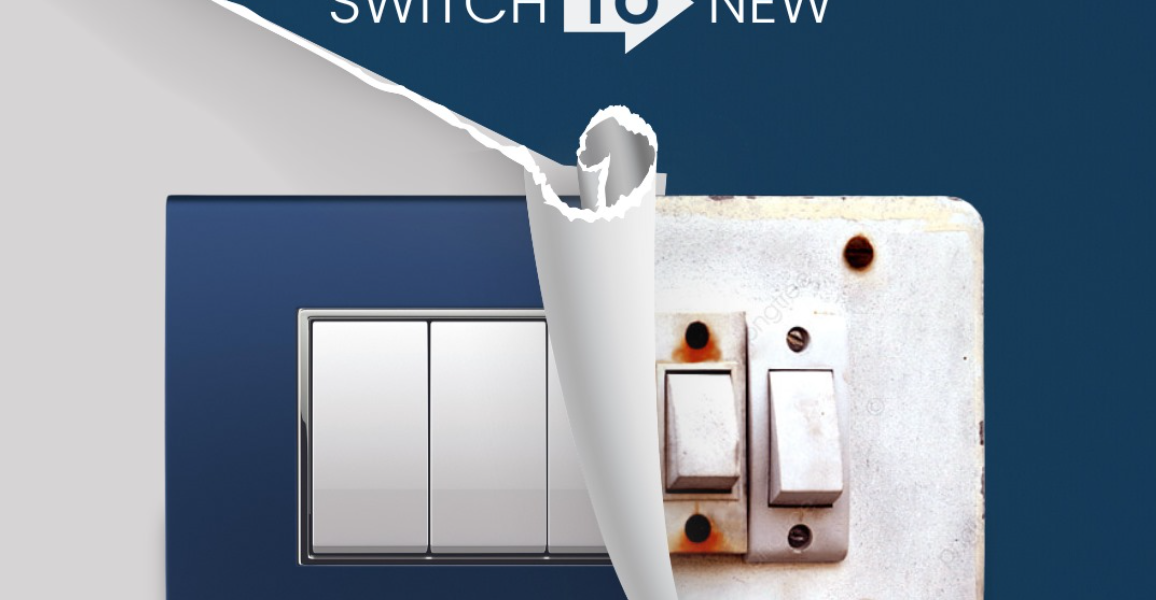

In the world of electrical fittings, modular switches have gained immense popularity due to their sleek design, ease of installation, and versatility. These switches have revolutionized how we interact with electrical appliances, offering aesthetic appeal and functional convenience. They come in various types, each tailored to different settings such as residential, commercial, and industrial spaces.
In this blog, we will delve into the types of modular switches available in the market and their importance within each space.
What are the Types of Modular Switches? What is Their Importance or Use?
Modular switches have become a ubiquitous feature in modern electrical systems due to their convenience, safety, and aesthetic appeal. They come in various types, each designed to serve specific purposes and cater to different settings.
Here are few types of modular switches along their importance and uses:
1) Standard Switches:
These are the basic on/off switches that control the flow of electricity to lighting fixtures and electrical appliances. They are essential in all types of settings, from residential to commercial and industrial, providing fundamental control over electrical devices.
 2) Dimmer Switches:
2) Dimmer Switches:
Dimmer switches allow users to adjust the intensity of lighting. They are commonly used in residential settings, especially in living rooms, dining areas, and bedrooms, enabling users to create different atmospheres and save energy by using lower light levels when needed.
 3) Fan Regulators:
3) Fan Regulators:
Fan regulator switches control the speed of ceiling fans. They are commonly used in homes, offices, and other spaces to achieve optimal comfort levels based on varying temperature conditions.
 4) Socket Switches:
4) Socket Switches:
Socket switches, also known as power outlet switches, are used to supply power to various devices and appliances. They are a vital component of residential, commercial, and industrial electrical systems, enabling the operation and charging of electronics and appliances.

Different Settings that Make Use of Modular Switches
1) Residential Modular Switches:
Modular switches enhance the aesthetics of living spaces, aligning with interior design themes due to their sleek and customizable design. They also provide safety with features like childproofing. Moreover, the ability to remotely control lights and fans enhances convenience, security, and energy efficiency.
The most common types of modular switches used in residential places include standard switches, fan regulators, dimmer switches, etc.
2) Commercial Modular Switches:
Commercial modular switches provide durability to withstand the rigours of heavy usage. They contribute to efficient communication and operation within the workspace. Indicator switches help in streamlining office dynamics, while data and telecom switches facilitate uninterrupted connectivity.
Some types of modular switches commonly used in commercial settings include bell push switches, indicator switches, etc.
3) Industrial Modular Switches:
Industrial environments are demanding and safety-conscious. Therefore, industrial modular switches prioritize safety and efficiency.
The types of modular switches used in these settings include emergency stop switches, isolator switches, and weatherproof switches.
Modular switches cater to the specific needs of residential, commercial, and industrial spaces. Their diverse types and functionalities not only enhance the aesthetics but also contribute to safety, convenience, and efficiency within each context. Whether it is creating a cozy atmosphere at home, ensuring seamless communication in offices, or safeguarding workers in industries, modular switches play a pivotal role in modern electrical systems.
